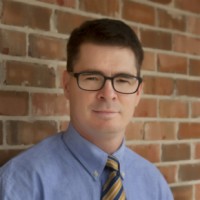Du Bois's lesson we still haven't learned
Tamir Rice, a 12-year-old boy shot in Cleveland by an officer in training, suffered death. According to an Ohio grand jury, the case is closed.
Elsewhere in these United States, presidential candidates have and will continue to laud America as exceptional. Some of the candidates have made American exceptionalism central to their personal narrative.
One of the noteworthy aspects of nationalistic exceptionalism is that America enjoys innocence. As Ronald Reagan said at the 1984 Republican National Convention, “We are not the cause of all the ills of the world. We’re a patient and generous people.”
The notion that America is normatively different than other nations, that America does not suffer social ills like everyone else, is not new. The idea can be traced back to the first colonial efforts of the European kingdoms in the 16th and 17th centuries. European imaginations were moved by the western hemisphere's stark newness to them. Thomas More wrote Utopia in 1516, contrasting the “new world” with overpopulated and degenerate Europe. In the excellent book The Intellectual Construction of America, Jack Greene wrote, “By associating Utopia with the New World, More . . . effectively directed attention not just to Europe’s own internal social, moral, and political problems but also to the as yet unknown potential of the immense New World.”
But racial prejudice is also found at the roots of North American civilization. If we sound the deepest parts of our identity as Americans, we find white supremacy along with the many forms of social ills that attend it as they have appeared over the four centuries since the first slaver in Jamestown. The tragedy Tamir Rice suffered—along with his community—is one manifestation of race prejudice’s degradation of American civilization.
W. E. B. Du Bois’s 1896 monograph The Suppression of the African Slave-Trade to the United States of America: 1638-1870 was based on his Ph.D. dissertation at Harvard. The work is, as Du Bois described it, "a small contribution to the scientific study of slavery and the American Negro."
Du Bois closed with a short section he called "A Lesson for Americans." There he reminded readers that as great as the founders were, they were flawed human beings seeking to achieve union of the colonies at the expense of leaving the monster of slavery in its cradle to thrive, flourish, and grow to ultimately turn on the new nation and tear it apart.
Du Bois warned Americans that it was their habit to deny or dismiss the presence of real social ills in their country. He observed that Americans were loathe to admit that their nation had deep flaws and sins, and the result of this denial was that they continually deferred the honest addressing of those flaws to later generations. The founders failed to adequately and decisively solve the question of the slave trade—and by extension the institution of slavery—at the Constitutional Convention, and this exacerbated the problem. The grandchildren and great-grandchildren of the founding generation plunged into the tragedy of the Civil War because of the failure of 1787.
Du Bois wrote,
We have the somewhat inchoate idea that we are not destined to be harassed with great social questions, and that even if we are, and fail to answer them, the fault is with the question and not with us. Consequently we often congratulate ourselves more on getting rid of a problem than on solving it. Such an attitude is dangerous; we have and shall have, as other peoples have had, critical, momentous, and pressing questions to answer. The riddle of the Sphinx may be postponed, it may be evasively answered now; sometime it must be fully answered.
The lesson for Americans of his day was to avoid the kind of failure the founders perpetrated at the birth of the nation. They were not to believe the lying words, "America is a pristine nation, pure and innocent of social ills." The call to Americans was to identify injustices in society and deal with them in the present moment rather than putting off those injustices for another day.
At the outset of 2016, American Christians have an opportunity to substantially contribute to answering Du Bois’s “riddle of the Sphinx.” Religion News Service reports that InterVarsity Christian Fellowship has called on 16,000 college students at its Urbana Missions Conference to fully support #BlackLivesMatter. Perhaps this marks an important moment for the American church.
Our weekly feature Then and Now harnesses the expertise of American religious historians who care about the cities of God and the cities of humans. It's published in partnership with the Kripke Center of Creighton University and edited by Edward Carson, Beth Shalom Hessel, and John D. Wilsey.






